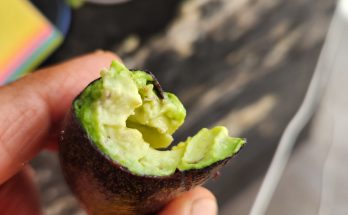By Bernardo Moreno González
Marcela Armas addresses her sincere and deep concerns through multiple disciplines and technology. They are concerns about society, human beings, and her connection to the Earth and everything it represents. Armas is a Mexican artist who has exhibited her work in Mexico, the United States, Canada, South America, Russia, China, and India. The Carrillo Gil Museum of Art in Mexico City presented a retrospective exhibition of her career in 2021. The exhibit is currently at the Museum of Art and History of Guanajuato in León. Armas gave this interview for Atención.
BM: What concerns drive the work you do?
MA: The first years of my work were a mixture of concerns, regrets, complaints, and questions about how our ways of life are organized. I am referring to these forms of dependency, uprooting, and oblivion, which derive from thoughts and actions that are violent at the root because they are based on a logic lacking in affection towards nature. It manifests itself, against ourselves, in the form of mother-lessness-Earth, a lack of elemental ties, affections, and foundations of life. Over time, those views of almost 20 years ago have transformed into clearer interests—directed toward an exploration of forces and renewed ways to address the crises we are experiencing through rituality, orality, deep listening, and resonance. These interests also transpire through upbringing, letting appear, and exploring together the infinite territory of the imagination and its intimate relationship with affection, expressiveness, and hope—which is nothing other than trust in the spontaneous and unpredictable processes of life.
BM: The last three projects you’ve done are really different. «Vórtice» is an exact mechanism that critiques education; «Implant» is a geological and anthropological project through the extraction of land and its exchange between countries; «Tsinamekuta» is beautiful and technological but, above all, human and poetic. Is there a common thread between them?
MA: Yes, they are united. With different strategies, the three works address deep exploration, which reveals ways in which our society relates to living systems. This is what the West categorizes as biological, geological, or cultural but which inter-exist—ways of operating that are governed by a lack of reciprocity, empathy, or consideration and respect. This point of view justifies the various extractive, destructive, and erasing practices that we know, as is the case of the dead archive in Mexico, where millions of tons of stories and lives put on paper are mined, crushed, demolished, and white-washed to produce later «updated» textbooks under the seal of green-washing. In summary, they are different strategies for us to observe ourselves and our ways of living and doing. But they also bring constructive, healing, [and] recognition possibilities in the search to recover that lost reciprocity and those reflections of ourselves in the world.
BM: You are now exhibiting «Looking with Our Mountain Eyes» in the city of León. Can you tell us what it’s about?
MA: I have partially answered this question in the previous ones. But I could add that this exhibition is a critical approach to different ways of reading and interpreting our living being—Earth. It invites us to move from feeling rather than from intellect, to reflect in part about the mechanistic, instrumental, mechanical vision of the westernized world through an inquiry into the purposes of certain technologies, questioning or decolonizing them, redirecting the intentionality of their uses. The exhibition also offers pauses, moments of contemplation, and resilience. Delve into the depths of the Earth, observe closely, or move away to the stratosphere to contemplate our brutal smallness.
It is an exhibition that brings together 16 projects from almost two decades of my personal work and some collaborative works. It is curated by Mauricio Marcín in collaboration between the Carrillo Gil Art Museum in Mexico City and the Guanajuato Museum of Art and History in León, with support from the BBVA Bancomer Foundation.
BM: Are you working on something new?
MA: I am starting «Mirrors of the Holobiont,» a documentary process which attempts to put into dialogue two open-source technologies and sciences. These have historically developed tangentially to the dominant accounts of orthodox science and technology, iridology, and soil chromatography. The purpose is to observe and provoke an interspecies conversation about the state of health of two diverse and interrelated living bodies: Earth’s soils and the human body. This project has the support of the Jumex Contemporary Art Foundation.
Paraphrasing my great friend and accomplice Shaday Larios: http://www.titeresante.es/2016/03/la-fuerza-micrologica-procesos-escenicos-con-la-pequena-escala-la-columna-la -brutal-little-of-shaday-larios/
You can see and understand the work of Armas at www.marcelaarmas.net/




